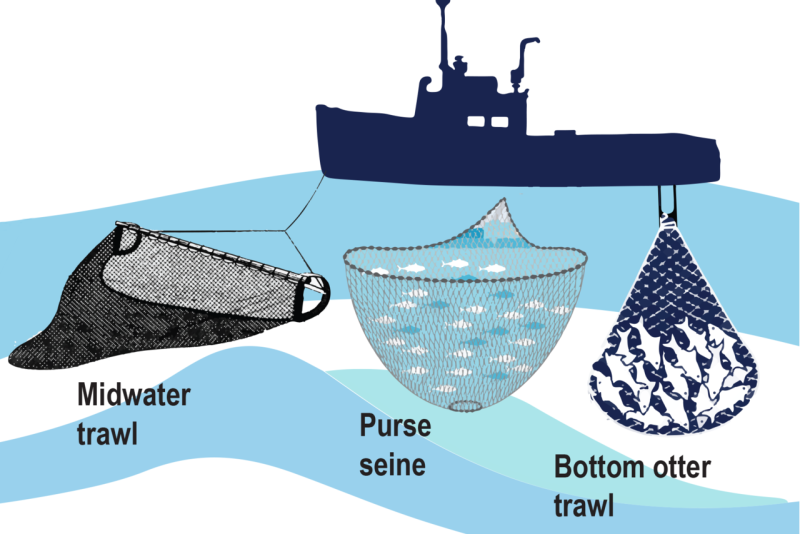What Industry-Funded Monitoring Does
Industry-Funded Monitoring establishes a 50 percent monitoring coverage target for at-sea monitoring aboard vessels with Category A or B herring permits using midwater trawl, bottom trawl, or purse seine gear on declared herring trips. Coverage target is achieved using the Standardized Bycatch Reporting Method of the Northeast Fisheries Observer Program plus IFM coverage.
The Goal
Overall, our goal is to provide increased accuracy in catch estimates. Specific goals include:
- Accurate estimates of catch (retained and discarded).
- Accurate catch estimates for incidental species with catch caps (haddock and river herring/shad).
- Affordable monitoring for the herring fishery.
Affected Species
Species affected by the IFM are Atlantic herring, American shad, blueback herring, haddock, and alewife.
How It Works
- Vessels with a limited access (A, B, C) or open access E herring permit sailing on a declared herring or herring carrier trip must use the new notification system to be considered for Standardized Bycatch Reporting Method or IFM coverage. Vessels issued an open access D herring permit using midwater trawl gear on a declared herring trip in herring management areas 1A, 1B, or 3 must also notify.
- If selected for IFM coverage, owners of vessels with A or B herring permits would be responsible for covering costs associated with those trips.
- Waivers could be requested for certain trips, including wing vessel trips that do not carry any fish and trips that land less than 50 mt of herring.
- Midwater trawl vessels could choose either at-sea monitoring or electronic monitoring with portside sampling to meet IFM requirements. They could also request to purchase observer coverage to fish in Groundfish Closed Areas.
Industry-Funded Monitoring Timeline
For More Information
Industry-Funded Monitoring Amendment
Carrie Nordeen (GARFO)
carrie.nordeen@noaa.gov
(978) 281-9272






